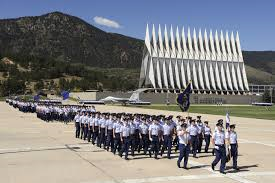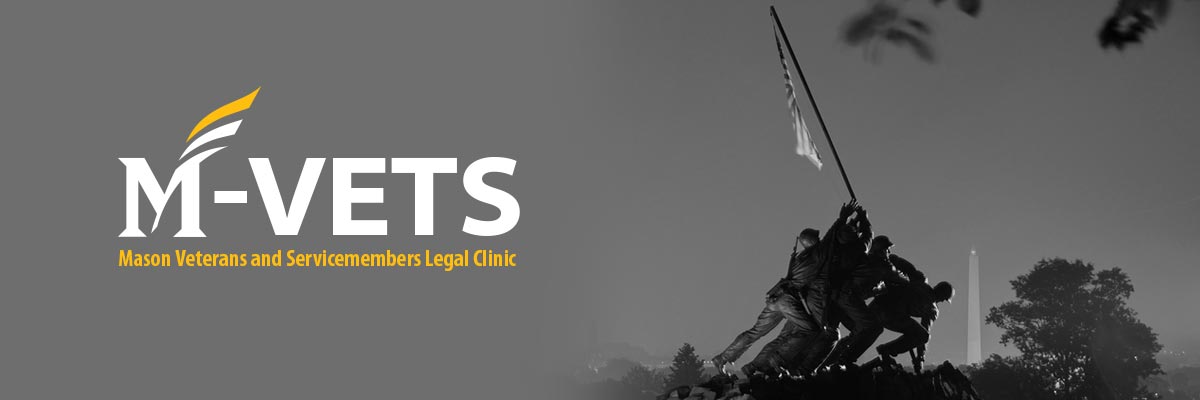
By Spring 2018 M-VETS Student-Advisor
The United States Military Academies are hallowed institutions in American culture. Most Americans can name West Point, the Naval Academy, and the Air Force Academy off the top of their heads, and these schools are often mentioned in the same breath as Ivy League institutions. The graduates of the academies include Presidents Dwight D. Eisenhower and Ulysses S. Grant, most of the major generals of the American Civil War, including Robert E. Lee, William Tecumseh Sherman, George McClellan, and “Stonewall” Jackson, sci-fi author Robert Heinlein, and numerous others. To be accepted to one of the service academies is seen as an incredible achievement, let alone graduating from one, and sets young men and women on the path to becoming one of America’s most trusted and respected members: a United States military officer. What most Americans don’t know is that America’s service academies turn out less than one fifth of the nation’s new officers each year[1] but spend four times more per new officer than a typical ROTC (Reserve Officer Training Corps) program and eight times more than typical OTS (Officer Training School) graduates.[2] The key questions then are: (1) why do the academies cost so much more than alternatives like ROTC, Direct Appointment, or OTS, and (2) is that increased spending justified?
The enormous expense in training academy cadets is easy to see. All cadets attending a United States service academy receive a full scholarship in exchange for a mandatory commitment to serve in the United States military following graduation. In addition to paying for the cadets’ tuition, the academies also cover the cost of textbooks and materials[3] and pay each cadet a monthly stipend or allowance of more than $800.[4] Based on these expenses, it’s understandable that the total cost per cadet at a service academy was estimated by the United States General Accounting Office at roughly $300,000.[5]
In contrast, while some ROTC cadets receive partial or full scholarships to their respective educational institutions, many do not. Some ROTC cadets receive living-expense stipends, but most do not and do not have the cost of their books or materials covered by the military. Because of these and other factors, the Tench Francis School of Business found that the academies spent four times as much on their cadets as ROTC programs and eight times as much as OTS cadets, who endure a condensed training program over a few months before commissioning as officers.[6]
If the academies are covering all expenses for cadets, essentially giving their students a “golden ticket,” that expenditure should be justified in the product the academies turn out. No one would seriously question that the academies turn out exemplary officers, but one would reasonably expect the academies to turn out officers superior to those who go through ROTC or OTS, given the sharp increase in spending on academy cadets. It would be fair to expect academy-graduate officers to surpass their peers in quality of performance, quantity of officers, or longevity of military careers, however the facts do not support these conclusions.
In terms of rates of promotion and career longevity, while academy graduates used to outstrip their peers, ROTC and OTS graduates are now staying in the military for longer periods of time and reaching flag-officer level at similar rates as their service academy counterparts.[7] In their analysis, the Tench School of Business concluded that “[d]ifferences in career progression between the three main commissioning sources were indistinguishable in the GAO Report. Ultimately, the quality indicators do not reveal any significant difference between commissioning sources. Thus, the tangible benefits from each program are exceptionally similar.”[8]
While ROTC, Direct Appointment, and OTS program graduates make up an increasing percentage of the military’s active duty officer numbers, active-duty training to fill specialized roles can also be very expensive, so if academy graduates stayed in the military longer than their counterparts, then the added expense could be justified. Walter Winfield Price III, a management consultant and former Navy officer who graduated from the Naval academy, stated, “That kind of longevity helps justify an academy education, especially considering the expensive training most junior officers undergo after college. […] When you look at the cost of educating a fighter pilot or a nuclear submariner – both of which outweigh the Naval Academy education – you want them to stay[.]”
According the GAO report referenced by the Tench Francis School of Business’s analysis, “only about a 6% higher retention rate has been measured for service academy graduates after 15 years of active duty, when compared to ROTC and OCS Graduates.”[9] While initial expenditures on cadets might be justified if the resulting officers remained in the military significantly longer, the slight increase in career duration likely does not justify the academies’ fourfold or eightfold increase in spending per cadet compared to ROTC and OTS.
If the service academies are only filling roughly twenty percent of the total officer requirements of the U.S. military, their graduates perform roughly as well as their counterparts from ROTC and OTS, and do not remain in the service significantly longer than their counterparts, are the academies a justifiable expenditure on the part of the federal government? Would it be fairer to take the money spent on one academy graduate and instead fund four ROTC cadets or eight OTS graduates? What is clear is that if the academies really do produce a comparable product for four to eight times the cost, something must be done to equalize the disparity or to justify the difference. Several potential solutions are discussed below.
The first option is simple and unlikely to be implemented: abolish the academies as an unjustifiable expenditure. Taking the “nuclear option” in this situation would mean abolishing the service academies and having ROTC and OTS absorb the officer production requirements. This option would certainly cut spending tremendously, but it leaves much to be desired in making effective use of the buildings, campuses, and resources of the institutions and honoring those academies’ history and legacy. To alleviate that issue, the academies could be turned into museums or sold off to let businesses or civilian universities take ownership of the sites. While these are feasible options, the backlash from the public, military, and alumni of the academies would make this set of options unappetizing and likely impracticable.
A second option would be to cut funding to the service academies dramatically. OTS graduates put themselves through college before ever entering military service. Many ROTC students do the same and even students on ROTC scholarships often have many additional living expenses that are not covered by taxpayer money. In short, many non-service academy cadets and midshipmen are working part-time jobs and taking out loans to make ends meet. The service academies could be forced to adjust their budget to provide for operational expenses rather than all-inclusive packages for each student. The drawback to this would be that it would be harder to recruit prospective students without the promise of a full-ride. Cadets and midshipmen may find that following the strict, often severe, rules of their service academy is not worth it if they are having to pay for the experience themselves. Essentially, this solution would likely make it significantly more difficult to recruit prospective students and would reduce the service academies to little more than a marginally more prestigious Virginia Military Institute or Citadel. This option would not fix the underlying systemic issue, namely that these institutions are not fulfilling any function that ROTC and OTS are failing to perform.
A third option would be to keep the service academies open for military specific training, but not for degrees. The academies could offer 8-week sessions where cadets from around the nation could attend Airborne, Air Assault, SOAR, SERE, and AFSC/MOS specific training. For example, cadets interested in Cyber could get a chance to attend an intensive designed with that AFSC in mind. Army cadets who have received the 11B Infantryman MOS could attend an 8-week Pre-Ranger course during their senior year prior to commissioning. Midshipmen could go to Annapolis to do anything from sailing to going through a SEAL screener. Some basic academic courses could continue to be offered to keep students on track for graduation.
Of these three potential solutions, it seems that the best course of action would be to turn the academies into sites for cadets and midshipmen from around the nation to receive military specific training and potentially earn a few academic credits. This would foster a greater sense of inclusivity at the service academies and allow for more in-training military personnel to benefit from using their facilities.
Military specific courses would be free to vary between the different service academies. Army cadets could take courses on ground navigation, small unit tactics, and convoy procedures. They could even earn their Airborne wings, Air Assault badge, or complete a Pre-Ranger course. Navy midshipmen could learn to sail, get acquainted with different vessels, and go through SEAL and SWCC screeners. Marine prospects could go through training as riflemen, get experience leading small platoons, as well as do urban combat and other training in austere locations. Air Force cadets could participate in SOAR and SERE programs. Intensives for AFSCs such as Cyber could also be created to teach interested cadets about what the job entails. This solution would allow for the service academies to remain operational while serving far more cadets. Additionally, research and experimental training could be conducted by the professors and instructors stationed at the academies.
Crucially, this solution would foster cohesion throughout the nation’s cadets and midshipman, eliminating any stigma attached to non-academy officers. The academies would no longer retain even the vestige of being an “old boys club,” with all the rumors of nepotism and backwardness that come with that reputation. But perhaps most importantly, this option would push forward the reality of the “citizen soldier” so central to the U.S. military. The military’s future officers would come from and be trained across the nation, exploring civilian life while preparing for military service, and every cadet and midshipman would see the academies as common ground, guaranteeing to every future officer an equal chance to experience and learn from the best military training the nation has to offer.
[1] Dep’t of Def., Population Representation 2010 – Active Component Commissioned Officer Gains, Defense.gov (2012), archived from the original on 26 June 2012, Retrieved 4 October 2017, available at, https://web.archive.org/web/20120626021140/http://prhome.defense.gov/RFM/MPP/ACCESSION%20POLICY/PopRep2010/appendixb/b_30.html.
[2] Comparative Analysis of ROTC, OCS and Service Academies as Commissioning Sources, Tench Francis Sch. of Bus. (Nov. 19, 2004), pages 1-3, available at https://cdn.shopify.com/s/files/1/0059/6242/files/tenchfrancisprose.pdf.
[3] Congressional Guide 2016, Admission to the United States Service Academies, pg. 25, available at https://www.westpoint.edu/admissions/shared%20documents/congressional%20guide%20(2016).pdf
[4] 37 U.S.C.A. § 203 (West), “(c) A cadet at the United States Military Academy, the United States Air Force Academy, or the Coast Guard Academy, or a midshipman at the United States Naval Academy, is entitled to monthly cadet pay, or midshipman pay, at the monthly rate equal to 35 percent of the basic pay of a commissioned officer in the pay grade O–1 with less than two years of service.”; U.S. Air Force Aca., Cadet Pay (Apr. 2009), available at http://www.usafa.af.mil/About-Us/Fact-Sheets/Display/Article/428296/cadet-pay/, (stating that, “U.S. Air Force Academy cadets earn $846 a month in basic pay.”; U.S. Mil. Aca., FAQ – Cadet Life, available at https://www.usma.edu/admissions/sitepages/faq_life.aspx, stating that “A first-year cadet earns more than $900 a month, and the amount increases each year.”
[5] U.S. Gen. Acct. Off., DOD Needs to Enhance Performance Goals and Measures to Improve Oversight of Military Academies (Sep. 2003), available at https://www.gao.gov/new.items/d031000.pdf.
[6] Tench Francis Sch. of Bus., supra note 2, at 1, citing a 1992 GAO Report.
[7] Id. at 1-2.
[8] Id.
[9] Id. at 3.
